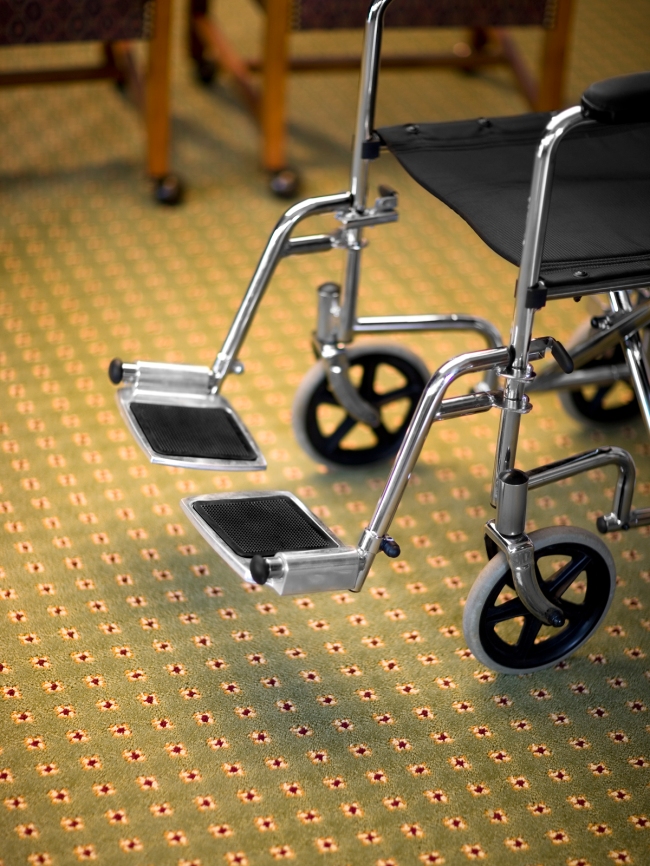Carpets, Health, and Healthcare
A recently released study conducted by Airmid Healthgoup Limited, a leading biomedical research organization, finds that properly maintained carpets (using high performance vacuum cleaners and cleaned using hot water extractors) can trap foreign allergens helping improve overall air quality…and can do this far better than hard surface flooring.
Similarly, a May 2008 study found that carpet can actually decrease the likelihood of infections being transmitted in a healthcare facility because of its ability to hold and trap contaminants. The study said carpets help “sequester” biological contaminants, keeping them from becoming airborne or transmited.*
This is very important information and is of value in not only healthcare settings but also schools, office facilities, and many other types of locations where many building users are located, often in rather crowded situations. However, for healthcare facilities, this type of information can actually save lives.
Each year it is estimated that approximately 100,000 people die in the United States due to healthcare acquired infections (HAIs). Because we have an estimated 50 direct and indirect contacts with floor surfaces each day, if a hard surface floor in a medical facility is contaminated with germs and bacteria, having a carpeted floor installed that can “sequester” these pathogens may help stop cross-contamination and potentially reduce HAIs.
 Another benefit, often overlooked, is that carpeting has natural anti-fatigue properties, especially if it has a very firm pad or cushion below the carpet. This is of great importance for those working in hospitals. According to the U.S. Bureau of Labor Statistics, nurses spend most of their days on their feet, and because of this, they are one of the top groups at risk for workplace-related injuries. Installing the proper carpeting, such as a modular carpet or a broadloom carpet with low pile construction, helps ensure that these important caregivers are productive, comfortable, and healthy.
Another benefit, often overlooked, is that carpeting has natural anti-fatigue properties, especially if it has a very firm pad or cushion below the carpet. This is of great importance for those working in hospitals. According to the U.S. Bureau of Labor Statistics, nurses spend most of their days on their feet, and because of this, they are one of the top groups at risk for workplace-related injuries. Installing the proper carpeting, such as a modular carpet or a broadloom carpet with low pile construction, helps ensure that these important caregivers are productive, comfortable, and healthy.
Finally, carpets help quiet a facility. Anyone who has recently visited a hospital or similar healthcare facility with hard surface flooring installed knows these locations can be quite noisy. According to one study, conducted by Press Ganey Hospital, which works with healthcare providers to understand and improve the patient experience in medical facilities, the number one complaint among patients in American hospitals is that they are simply too noisy. Installing carpeting can help rectify this problem and could increase healthcare worker performance, improve patient morale, reduce medial errors, and even help prevent violent or erratic behavior of patients and staff due to stress.
However, there is one caveat to most of the benefits mentioned here, and that is that carpets must be adequately cleaned. Thorough and effective cleaning, which can only be accomplished through the use of truckmounted and high performance portable hot-water extraction equipment, is the only way to ensure that the “filter” (i.e; the carpet) has had the contaminants removed, and to keep indoor air quality healthier. Further, a clean, healthy carpet simply performs better, meaning it can also be more effective at reducing worker fatigue and workplace-related injuries and keeping facilities quiet as well. All of these benefits underscore the many health and healing properties of carpeting.
In addition, the proper use of carpet cleaning solutions ensures the maximum cleansing of the filter (i.e; the carpet) to eliminate potentially harmful contaminants, soil, and allergens. We recommend the consistent use of an effective carpet prespray like FastBreak HD, with the use of an “in-tank” solution through the extractor like CleanMaster HydraClean. Studies have also shown this combination of cleaning solutions removes the most amount of soil and leaves the least amount of residue.
To request your complete FREE cleaning reference guide that details step by step effective hot water extraction procedures, and the right cleaning solutions, simply click here.
* “Carpet, Asthma and Allergies—Myth or Reality” by Mitchell W. Sauerhoff.
Author credit to Robert Kravitz
Tags: CleanMaster, FastBreak HD, health, HydraClean, truckmount





